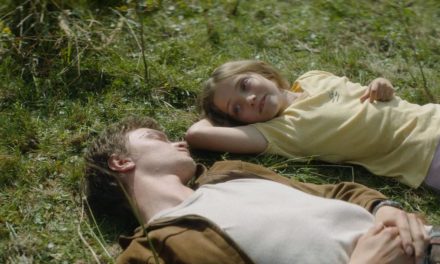"A nation that does not know its past does not understand its present, and cannot create its future!"
Europe needs Hungary ... which has never allowed itself to be defeated.
Árpád's people founded a homeland in the Carpathian Basin after the third "conquest". For a century, the Hungarian Principality was ruled by the Árpáds, and for three centuries thereafter, the Árpád Kingdom of Hungary defended the homeland and at the same time Europe against invaders from the east and south.
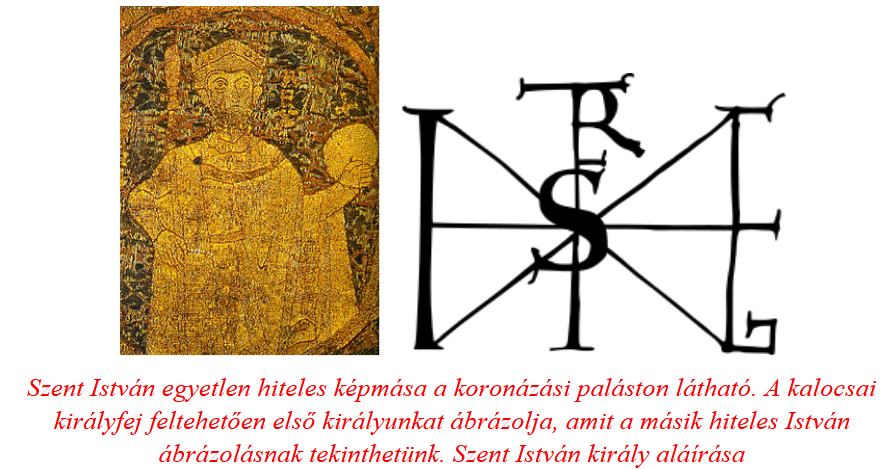 István was crowned king on December 25, 1000, II.
István was crowned king on December 25, 1000, II.
With a crown from Pope Sylvester. István had apostolic authority, which was almost unique in Christian Europe of the time. (This meant that he was given a free hand in the appointment of bishops and the organization of the church.) Among the creation of laws, his first task was the organization of dioceses.
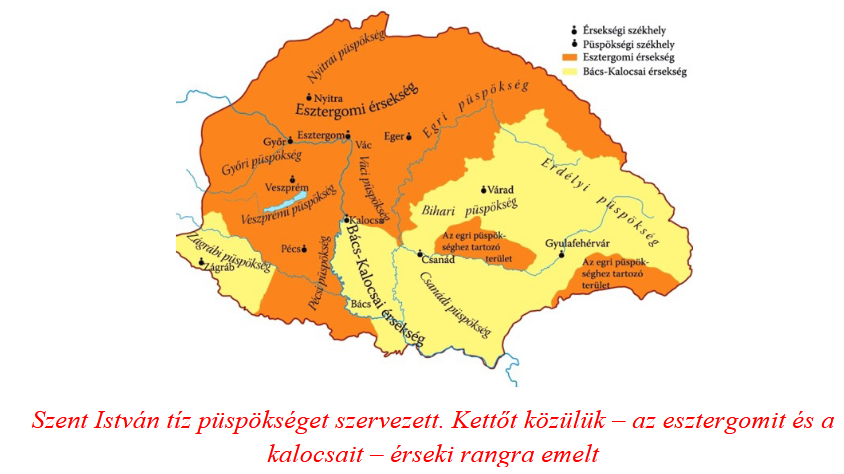
In addition to the ten dioceses, he founded monasteries and regulated the operation of the church with laws. These included the payment of tithes, the obligation to build churches, and the ordering of Sunday church attendance and fasting. Our first king rightfully earned the rank of the founder of the state when he created a well-functioning European country by organizing the 45 counties.
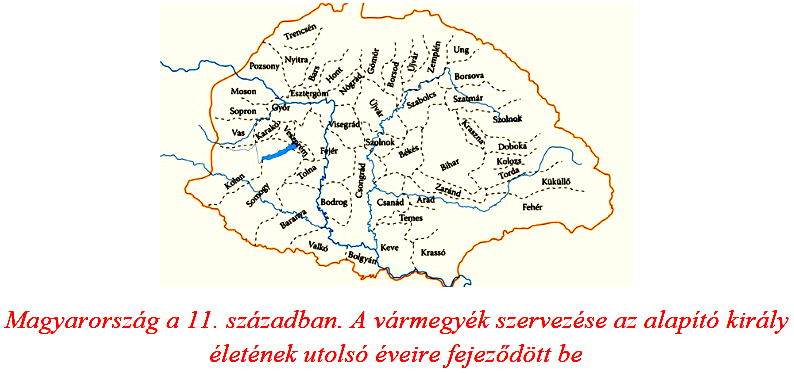
At the head of the counties, the county marshal, at the head of the castles, the castle marshal supervised the payment of taxes, the operation of customs, the organization of economic life and the military. István established the royal council, minted money, and created laws. In addition to the royal council and the nobles promoted by the king, Queen Gizella also helped the operation of the state.

The royal seat was moved from Esztergom to Fehérvár, which lay along the pilgrimage route to Jerusalem. The importance of Fehérvár stood out from the rest of the cities, as it was the location of the royal seat, the coronation church and the royal burial place. It was only developed in London in the whole of Europe. It is typical of our stormy history that, while the London Abbey still stands today, the royal seat of Fehérvár is marked by a dilapidated Ruin Garden. Even after the adoption of Roman (and Byzantine) Christianity and the coronation of Stephen, the attacks against our country did not stop.
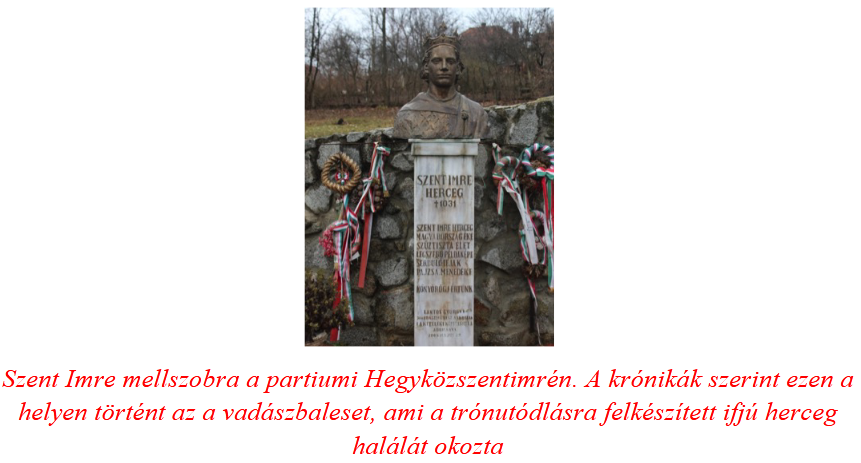
When II. The Holy Roman Emperor Henrik, the brother-in-law of Saint Stephen, died in 1024, ending the peaceful period of almost half a century. The successor, II. Emperor Konrad no longer saw Hungary as a partner, but as a subordinate state. In 1030, the German armies gathered along the border and broke into the country. István still received the enemy advancing as far as Győr with the ancient method, the tactic of emptied and scorched earth. The starving, exhausted Germans advanced as far as the Rábá, and then took it as an escape. King István's rested troops overtook the German knights at Vienna and won a decisive victory over them. According to the peace concluded in 1031, the territories between the rivers Fischa and Lajta came into Hungarian hands. Prince Imre, the only surviving son of our first king, who had been carefully prepared for the reign, died under mysterious circumstances in this very year, 1031, in the forests of Bihar.
 For centuries, deceitful historians have set up the never-proven event that the prince was fatally wounded by a wild boar while hunting. (Such tragic "accidents" are not rare in Hungarian history. However, it is puzzling that these tragedies occurred at a time when it was in the interests of the great powers seeking the independence of our country. Those who hold opposing views can only reply that it is a "conspiracy theory".) After Imre's death, our founding king made two wrong decisions.
For centuries, deceitful historians have set up the never-proven event that the prince was fatally wounded by a wild boar while hunting. (Such tragic "accidents" are not rare in Hungarian history. However, it is puzzling that these tragedies occurred at a time when it was in the interests of the great powers seeking the independence of our country. Those who hold opposing views can only reply that it is a "conspiracy theory".) After Imre's death, our founding king made two wrong decisions.

It is possible that the Bavarian relatives, who actively participated in court life, played a significant role in this. One of his bad decisions was when he nominated Péter Orseolo as his successor. István's sister - who was the wife of the Doge of Venice, Ottó Orseolo - was expelled from Venice in 1026 with her child named Péter. István took in his sister Ilona and her son, and even appointed Péter as the commander of the royal Russian bodyguard. Péter's thinking and his entire upbringing served the purpose of giving the Hungarian throne to foreign hands. István's other bad decision was when he sidelined Vazul and his sons. Vazult /Vászoly/, the oldest male member of the Árpád house, was already offended when he nominated Imré István as his successor. According to the ancient law, as in the case of Koppány, he would have been entitled to the throne. The foreign lords (Bavarians) who played an influential role in the court definitely wanted to prevent this. The rebel Vazul was captured and imprisoned in Nyitra Castle. According to the custom of the time, lead was poured into his ears and he was blinded so that he was unfit to rule. Vazul - according to other assumptions, László Szár - also wanted to remove his three sons, Béla András and Levente. According to some researchers, the last male members of the Árpád house were fled from the country by István. András and Levente were sent to Kievan Rus, and Béla to Poland, where they were received and cared for in a manner befitting a prince. András and Béla will continue to play a decisive role in Hungarian history. During the period of strife for the throne following the death of St. Stephen, the fight between Péter Orseolo (1038-1041) and Sámuel Aba (1041-1044) raged continuously.
 According to some assumptions, Aba Sámuel married István's brother named Sarolta. The Abás, the lords of the Highlands, thus became the king's allies. The region of Mátra and the county of Újvár /from Gyöngyös to Kassa/ were the possessions of the Abák family, and together with this, in 1010, they became an integral part of Szent István's kingdom. III. Emperor Henry (son of Conrad II) attacked Hungary four times. In 1041, Péter Orseolo fled to the German-Roman emperor from the attack of Sámuel Aba and his followers. The only non-Árpád king followed his enemies into the imperial territory and advanced as far as the city of Tulln. (This is the city on the banks of the Danube, where Atilla, the great king of the Huns, met his future wife, Princess Krimhilda, more than fifteen hundred years ago.) ( One of the most interesting and professional excavations of recent years is taking place in Abasar. The archaeologists of the Hungarian Research Institute are the modern the burial place of the Abás is being researched and analyzed using all the means of technology. The stakes are high, as it is now possible to determine to which ethnic group Aba Sámuel belonged. In addition to the Kun, Khazar, Kabar-Káliz, Hvarezmi (all eastern) origins, the /Sámuel / the Jewish origin was also suggested. The latter, if confirmed, would greatly disturb the historical view of the Árpád era phase of Hungarian history. However, it would not change the essence, since he was the only king, and moreover not an Árpád house king, whose descendants did not enter the to the Hungarian throne. But it is also worth knowing that Aba Sámuel was the only ruler who was a king chosen by his followers.)
According to some assumptions, Aba Sámuel married István's brother named Sarolta. The Abás, the lords of the Highlands, thus became the king's allies. The region of Mátra and the county of Újvár /from Gyöngyös to Kassa/ were the possessions of the Abák family, and together with this, in 1010, they became an integral part of Szent István's kingdom. III. Emperor Henry (son of Conrad II) attacked Hungary four times. In 1041, Péter Orseolo fled to the German-Roman emperor from the attack of Sámuel Aba and his followers. The only non-Árpád king followed his enemies into the imperial territory and advanced as far as the city of Tulln. (This is the city on the banks of the Danube, where Atilla, the great king of the Huns, met his future wife, Princess Krimhilda, more than fifteen hundred years ago.) ( One of the most interesting and professional excavations of recent years is taking place in Abasar. The archaeologists of the Hungarian Research Institute are the modern the burial place of the Abás is being researched and analyzed using all the means of technology. The stakes are high, as it is now possible to determine to which ethnic group Aba Sámuel belonged. In addition to the Kun, Khazar, Kabar-Káliz, Hvarezmi (all eastern) origins, the /Sámuel / the Jewish origin was also suggested. The latter, if confirmed, would greatly disturb the historical view of the Árpád era phase of Hungarian history. However, it would not change the essence, since he was the only king, and moreover not an Árpád house king, whose descendants did not enter the to the Hungarian throne. But it is also worth knowing that Aba Sámuel was the only ruler who was a king chosen by his followers.)
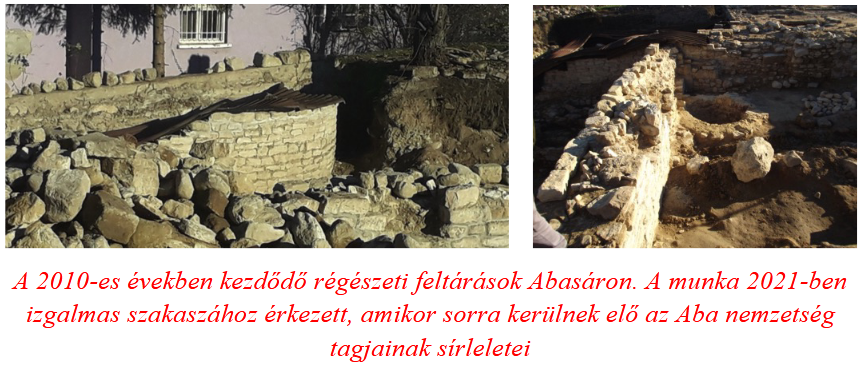
As soon as Aba Sámuel arrived back in Hungary, III. Henry broke into the country at the head of his armies in 1042. After occupying Bratislava, the Germans advanced as far as the Garam River, and were then forced to retreat. In 1043, the Germans attacked the Kingdom of Hungary again, but Sámuel Aba stopped them. III. The following year, Henrik invaded Hungary again to restore Péter Orseolo to the throne. It should be noted, however, that the emperor's continuous attacks were not made in the interest of King Peter, but rather aimed at making the Kingdom of Hungary a subject. Near Győr, in the bloody battle of Ménfő, Sámuel Aba was defeated. Péter Orseolo (1044-1046) became the king for the second time. The plan worked, as King Péter III invited him to Fehérvár in 1045. Emperor Henrik, who became a fief of the Venetian-educated, foreign-hearted king. The German emperor achieved his goal and became a fief of Hungary. Fortunately, not for long.
Aba Sámuel's historical role may still cause many surprises thanks to the aforementioned archaeological excavations.
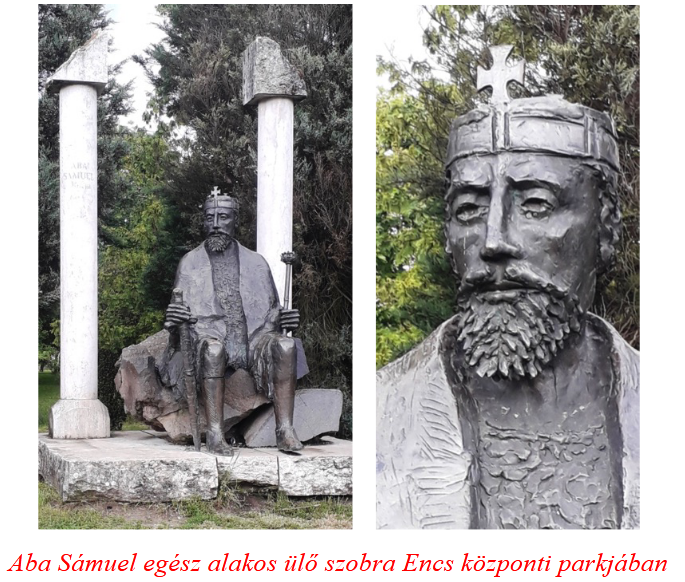
The county of Újvár in the north-eastern part of the country, which is currently known as Abaúj county, deserves a special mention. After Trianon's border changes, Kassa, the former center of the county, was replaced by smaller settlements, such as Encs. The most beautiful sculpture depicting Sámuel Aba can be seen in the small town's memorial park. Abaújvár lies along today's border - from where you can already see Kassa.
 The small village of Aba, with only 250 souls today, was a populous city in Sámuel's time and played an important role as an accommodation center for trade, ecclesiastical and military organization. The dimensions of the still largely unexplored Abaújvár earthen castle allow us to conclude that there was once a lively life here.
The small village of Aba, with only 250 souls today, was a populous city in Sámuel's time and played an important role as an accommodation center for trade, ecclesiastical and military organization. The dimensions of the still largely unexplored Abaújvár earthen castle allow us to conclude that there was once a lively life here.
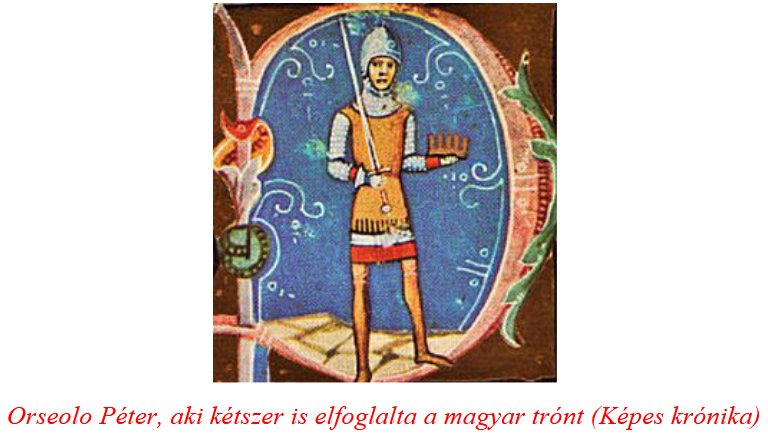
Hungarians of Scythian blood could not accept a foreigner ruling the Hungarian throne.
 In 1046, the rebellion led by Ispan Vata of Békés was successful, they drove Péter from the throne. The king lost his life during the fighting. (Bishops Gellért, Budli and Bestrik were also martyred in the feud for the throne that claimed many victims. Presumably where the statue of the bishop stands today on Gellért Hill.) In 1046, the rebels called home the banished sons of Vazul and the eldest, András, the "pagan prince ” was placed on the Hungarian throne. However, the first thing András I (1046-1060) did was to defeat the "rebels" who helped him to the throne. The German attacks continued.
In 1046, the rebellion led by Ispan Vata of Békés was successful, they drove Péter from the throne. The king lost his life during the fighting. (Bishops Gellért, Budli and Bestrik were also martyred in the feud for the throne that claimed many victims. Presumably where the statue of the bishop stands today on Gellért Hill.) In 1046, the rebels called home the banished sons of Vazul and the eldest, András, the "pagan prince ” was placed on the Hungarian throne. However, the first thing András I (1046-1060) did was to defeat the "rebels" who helped him to the throne. The German attacks continued.
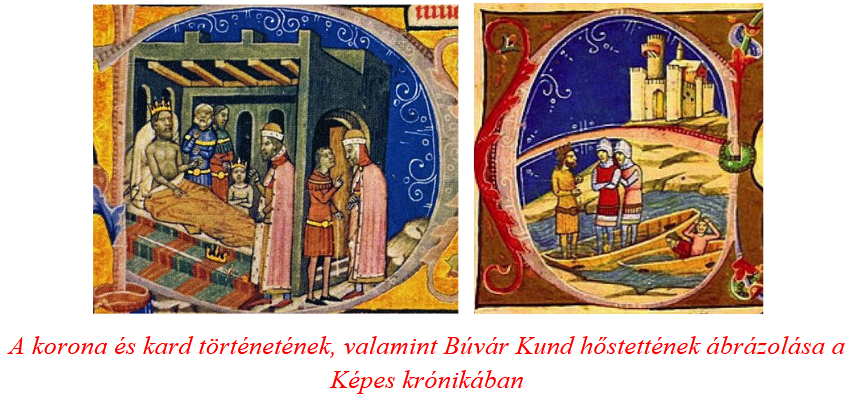
In the fall of 1051 III. Henrik's troops advanced as far as Fehérvár. Following the scorched earth tactic, the Hungarians evaded the German attacks, tiring them out. The retreating, starving and tired invaders were attacked by the Hungarian king's troops led by Prince Béla in the Vértes Mountains and inflicted a crushing defeat on them. III. Henrik did not settle for defeat, in the summer of 1052 he besieged the castle of Bratislava. The ships lined up on the Danube were drilled by a diver named Zotmund and some of his companions under the cover of night. The ships sank by dawn. (The name Búvár Kund spread based on Mihály Vörösmarty's poem.) The German-Roman emperor ordered a shameful retreat, as he was defeated again. However, the Germans managed to tie Hungary to them with even stronger ties. In 1058, the new emperor, IV. Henry (son of Henry III) made peace with András the Catholic. Based on one of these agreements, Henrik's sister, Princess Judit, was betrothed to King Andrew's son Solomon, who was crowned co-king in 1057. (History of Crown and Sword.) However, the German attacks continued.
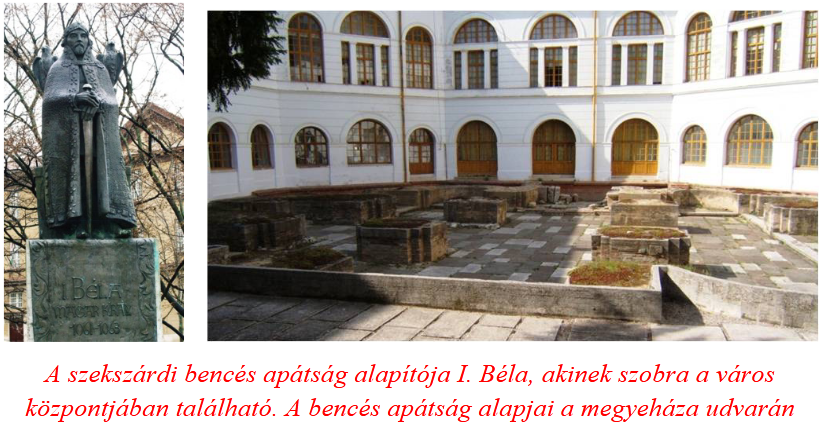
They were not relieved that after András's death, it was not Salomon, who was loyal to the German-Roman Empire, but András's younger brother, Béla, who came to the throne of the Árpáds. The antagonism between Béla I (1060-1063) and the emperor was immediately renewed, as he wanted to place Henrik's vassal, Solomon, on the throne. The allies of the aliens did not shy away from the assassination in addition to the armed fights. This is how it happened that in 1063, in Dömös, where King Béla was staying, the heavy oak throne fell on the monarch. (Béla is also referred to by posterity as Béla Bajnok due to his valor and talent as a general. German attacks in 1051 and 1052 were also repulsed under the leadership of Duke Béla.) After the Dömös assassination, despite his serious injuries, the king still reached the western border, and in Moson, he lost his life in a battle against the Germans. Béla's sons, Géza, László and Lampert, fled to Poland. The escape of the three Árpád boys to Poland was eerily similar to the escape of the Vazul boys, which happened a quarter of a century earlier. Meanwhile, Solomon marched to the royal seat, Fehérvár, under the protection of the German army, where he took the throne. He ruled the country between Solomon (1063-1074) with more or less success.
The eldest prince, Géza, returned to the land of the Árpáds a little later, in 1064, at the head of a Polish army.
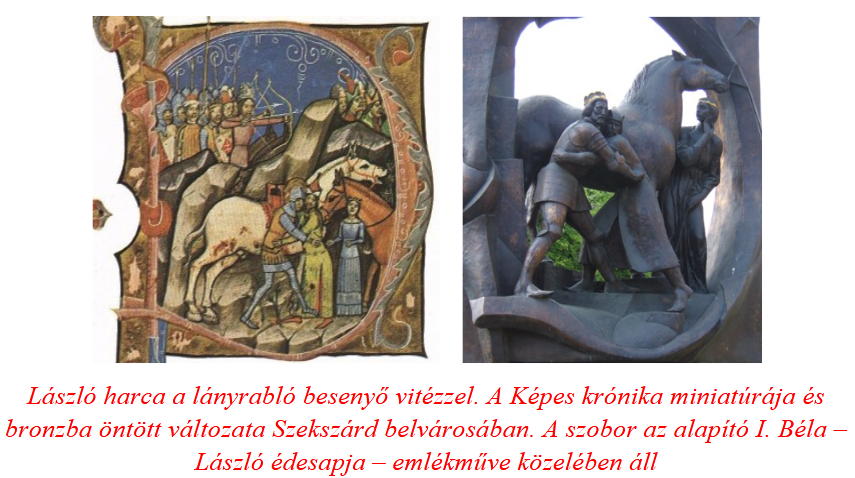
The feud for the throne flared up again, which was ended by a fraternal peace treaty. Solomon remained the king, and Béla's sons managed their princely estates. In 1068, Salamon, Géza and László combined forces to drive out the invading Peshenian armies from the eastern parts.

During this campaign, the heroic deed that has become a legend took place, when Prince László rescued a Hungarian girl kidnapped by a Peshenian warrior. László's unparalleled career began with this battle of Kerlés (Cserhalom), which made him one of the most popular rulers and a saintly hero of Hungarian history. The peace between Salamon and Béla's sons proved to be fragile, and after a few years it turned into a feud for the throne. Author: Ferenc Bánhegyi
The parts so far can be read here: 1., 2., 3., 4., 5., 6., 7., 8., 9.
Header image: Gpadia)




